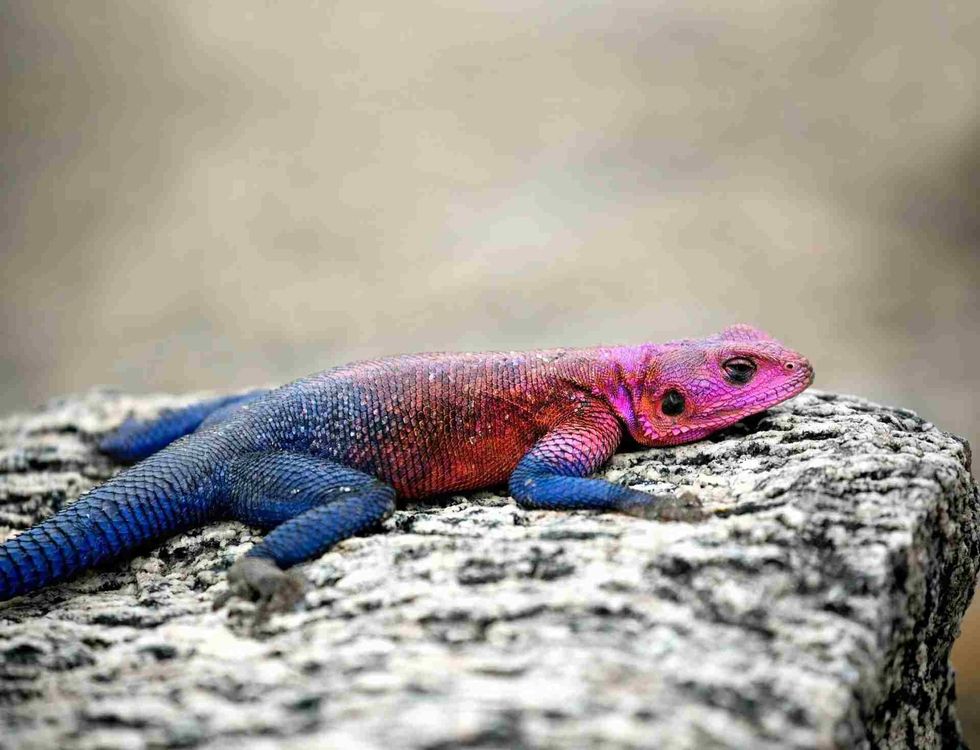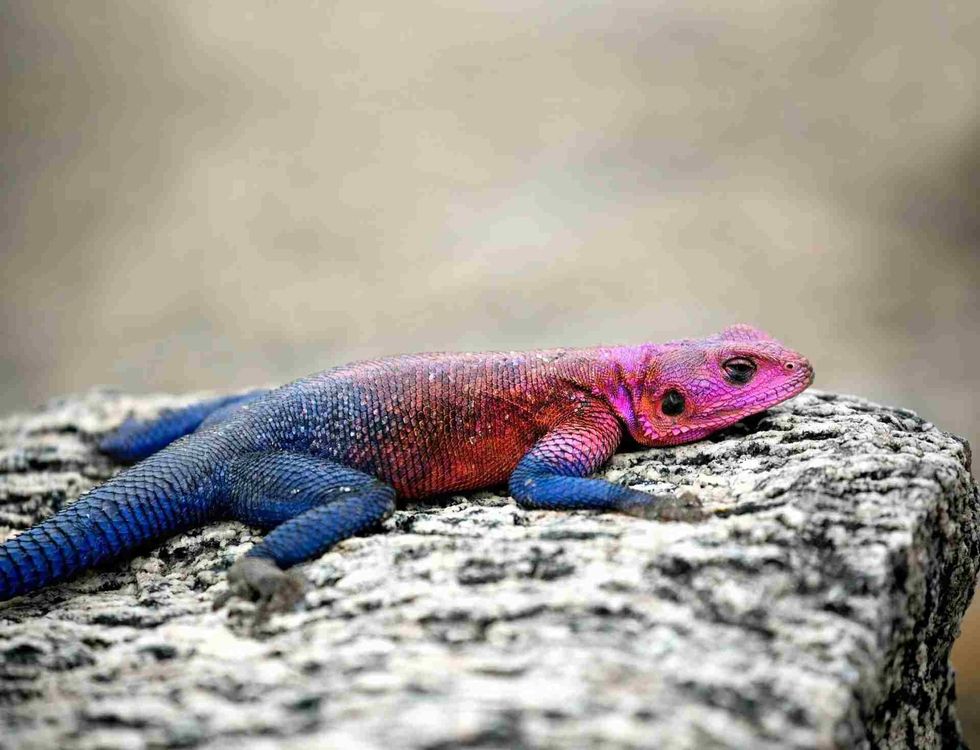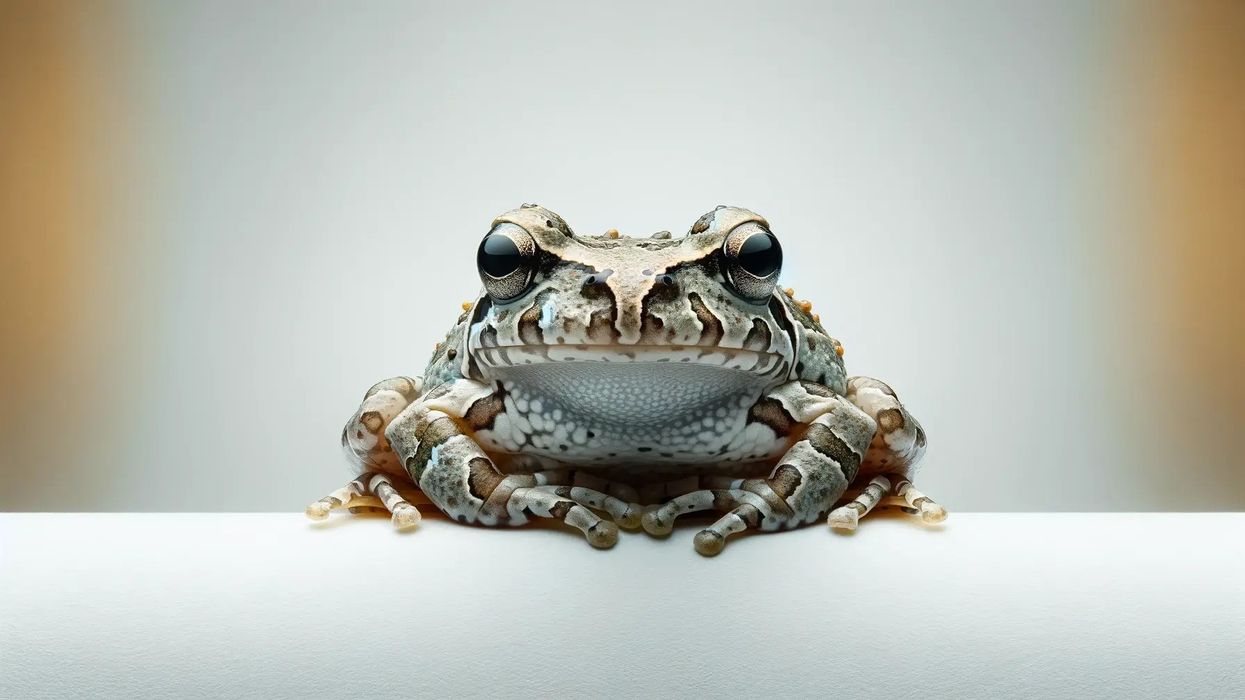Amphibians and reptiles live their lives on both land and water, and people confuse the two very often.
Amphibians are animals that live a dual life—they can live on land as well as in water. They have permeable skin that has to be kept wet constantly.
Amphibians lay their eggs in water, and their young ones have gills to help them live in the water, even during the larval stage. Popular examples of amphibians include frogs, toads, and salamanders, all of which are cold-blooded vertebrates.
On the other hand, reptiles have evolved to be able to live entirely on land or, at times, a balance of land and water. They are viviparous, which means they breathe via their lungs.
They have dry, scaly skin that helps them retain moisture and defend themselves from predators. Examples include snakes, crocodiles, and lizards.
It is also known that a few reptiles live their lives in water.
This includes many snakes, but the most popular reptile species that spend most of their lives in water include saltwater crocodiles, sea snakes, sea turtles, and marine iguanas. There are, of course, those snakes and other reptiles that spend their time in the water and come back to the land to nest.
Reptiles and amphibians are animals that have many differences in their characteristics but also some similarities. Not all amphibians are reptiles.
While reptiles are terrestrial animals that live on land and lay their eggs in nests or on the ground, amphibians prefer an aquatic environment, especially during their larval stage. They lay eggs on water surfaces and like to live there. Snakes, lizards, and crocodiles are common reptiles, whereas salamanders, turtles, and frogs are common amphibians.
Amphibians and birds are related in various aspects, the most basic being that they are both living entities made up of eukaryotic cells. Because of their transparent skin, amphibians are thought to be highly sensitive organisms when it comes to their living environment.
Amphibians rely on the water in their surroundings to keep their skin moist, procreate, and obtain food.
Certain amphibians can withstand being immersed in salt water for an extended period of time. However, most amphibians are unable to survive in such water because it affects their water and ionic exchange through permeable membranes.
If you like reading about amphibians vs reptiles, you should read further to learn about them in detail. You must also read our other articles on hinny vs mule and nutria vs muskrat, here at Kidadl.
Five Major Differences Between Amphibians And Reptiles
Physically, reptiles and amphibians are very different animals. Reptile skin is dry and full of scales, but amphibian skin is wet and sticky. Amphibians have smooth skin compared to reptiles' scaly ones. Unlike reptiles, most amphibians' skin is not waterproof.
Although most amphibians have lungs, they breathe air mostly via their skin and mouth lining, whereas most reptiles breathe through their lungs and mouth, similar to other animals.
Amphibians undergo external fertilization, whereas reptiles undergo internal fertilization.
Reptiles and amphibians undergo fertilization by laying eggs. However, reptile eggs are hard, leathery, and frequently put in underground, insulated nests to protect their young ones.
Amniotic fluid is present in reptile eggs, which are protected by the leathery shell. On the other hand, amphibian eggs are delicate and lack an external membrane, and they are often attached to the stems of aquatic plants. In the absence of a rigid protective external layer, amphibians lay jelly-like eggs that are deposited in water.
In amphibians, embryos grow into larvae, which then undergo metamorphosis to turn into adults, whereas in the case of reptiles, the embryos grow into young reptiles that are comparable to adults in size without any metamorphosis.
Are amphibians and reptiles related?
Although reptiles and amphibians have numerous characteristic differences, they are both ectothermic, which implies they are cold-blooded and require outside heat sources for thermoregulation (regulating their normal body temperature).
Reptiles use exterior actions such as basking to assist in maintaining that temperature change. They are both members of the Chordata phylum and the Vertebrata sub-phylum. Amphibians and reptiles both utilize camouflage to defend themselves from predators.
Both of them are carnivores. In each of these animals, the cloaca is an aperture on the body. It's where the vaginal, urine, and digestive outputs all come together from the body.
Five Amphibians And Reptiles
Amphibians are classified into three groups or orders: Urodeles (salamanders and newts), Anurans (toads and frogs), and Caecilians (toads and frogs). Snails are not amphibians, despite the fact that some may be found on land and others in the water.
In today's world, there are four reptile orders. Crocodiles and alligators are members of Crocodilia. Crocodiles are not amphibians but rather reptiles.
Crocodiles and amphibians belong to the same class as reptiles, and both lay eggs and are cold-blooded. However, even in this likeness, there is a difference. Reptiles, such as crocodiles, fertilize their eggs inside, while amphibians fertilize their eggs externally.
Lizards, snakes, and other related species are classified as Squamata. The Testudines order includes all turtles. Only two species of tuatara are found in the Rhynchocephalia order, both of which are endemic to New Zealand.
What are the seven characteristics that distinguish reptiles from amphibians?
Reptiles and amphibians have a lot of differences in their characteristic features that distinguish them from one another, including the number of limbs, the presence of gills or lungs, larval stage, life cycle, body temperature, and skin type difference. Some of these characteristics that distinguish reptiles from amphibians are:
Amphibians are ectothermic, cold-blooded creatures that can live in both aquatic and terrestrial environments. Reptiles are land-dwelling, cold-blooded animals (ectothermic) that are covered in epidermal scales and live on land.
Amphibian skin is smooth, wet, porous, and sometimes sticky, with many mucus glands. Whereas reptile skin is covered with dry scales organized in a certain pattern. Underneath the keratin-based dry scales, the true skin can be discovered.
Amphibians, such as certain types of frogs, have glands on their skin that create poisonous toxins as a protection strategy to protect them against predators. Reptiles have no such toxins secreted by glands on their skin.
Most adult amphibians breathe via their porous skin, but some have lungs as well. A newborn tadpole in water breathes via its gills. Reptiles, both adult and young ones, cannot breathe via their skin and rely on pulmonary respiration as their main means of breathing.
Amphibians' fore-limbs are small, while their hind limbs are long, with five webbed fingers. Except for a snake that has no limbs (or legs) and slithers on land, reptiles normally have four limbs, including two legs.
In an amphibian, the heart is three-chambered, with two auricles and a ventricle. The reptile heart has three internal chambers with two auricles and a split ventricle.
An amphibian's tongue is typically whole. However, some may have a bifurcated tip. Reptiles have a bifurcated tongue, which is a distinguishing trait.
Amphibians have a limited color range and are unable to distinguish between a variety of hues. Color perception and visual depth are superior in reptiles.
Here at Kidadl, we have carefully created lots of interesting family-friendly facts for everyone to enjoy! If you liked our suggestions for amphibians vs reptiles: animal differences facts simplified for kids, then why not take a look at muskrat vs beaver to learn the key differences between mammal rodents or how many ribs a human has?
Learn curious human body facts for kids!







